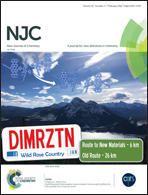Property enhancement and DFT study of wood polymer composites using rosin derivatives as co-monomers
Abstract
We report herein the preparation of wood polymer composites with modified soybean oil as the polymer matrix and softwood as the reinforcement agent. This study concentrates on the possibility to replace styrene with rosin-based derivatives as the rigid monomer, in order to improve the performance of the final composite. For comparison, styrene was also used to co-polymerize with the modified soybean oil. The chemical structures of the synthesized rosin derivatives were confirmed by Nuclear Magnetic Resonance (NMR) and Fourier Transform Infrared (FTIR) spectroscopy. The mechanical and thermal properties showed significant improvement after co-polymerization with rosin derivatives. The probable interaction among the polymer matrix, rosin derivative and wood flour was established by FTIR analysis, also supported by Density Functional Theory (DFT) calculations. The surface morphology, water uptake capacity, volumetric swelling and flame retarding properties of the composites were investigated. The results demonstrate that rosin acid derivatives possess great potential as co-monomers to replace petroleum-based rigid compounds for the preparation of soybean oil based wood polymer composites.



 Please wait while we load your content...
Please wait while we load your content...